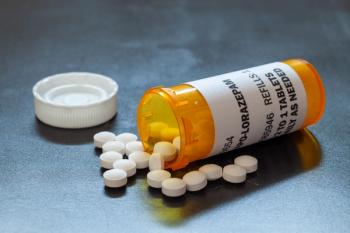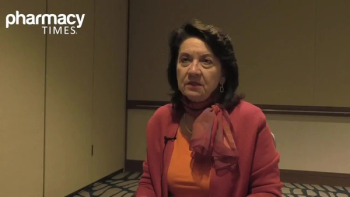
This Skin Cancer Awareness Month, Remind Patients of the Prevention Basics

As summer approaches, remind patients to go back to basics with sunscreen and self-examinations.
May is Skin Cancer Awareness Month and summer months are right around the corner. Pharmacists should be readily available to help patients balance the risks of sun exposure while still enjoying the warm weather or a relaxing swim. Skin cancer is the most common cancer in the United States, with 1 in 5 individuals affected in their lifetime.1 With that said, it is critical for pharmacists to have the training and knowledge to help patients understand the importance of prevention, as most skin cancers are treatable if detected early.1
The three major forms of skin cancer are basal cell carcinoma, squamous cell carcinoma and melanoma. While skin cancer can be treated and the earlier the detection the better, melanoma is considered the deadliest form of skin cancer and special importance should be placed in ensuring patients are aware of what to screen for when evaluating their skin.
Proper skin cancer prevention also includes self-examination. The American Cancer Society does not have guidelines on how often to perform a self-examination, although it is generally recommended to check your skin at least once a month.2 In a well-lit room, and with the assistance of a friend or spouse, if possible, all areas of the skin should be evaluated in the mirror, including underarms, scalp, and fingernails.2
Specifically, for melanoma, patients should consider the ABCDE rule: A for asymmetry, B for border (irregular edges), C for color (varying colors/shades), D for diameter (greater than 6 mm), and E for evolving (the mole has changed since last inspection).3 Other signs a patient should be advised to look for are sores that don’t heal, scaly red patches, and new growths.2 If anything concerns the patient, they should schedule an appointment with their dermatologist to have their skin further evaluated. Patients can even see a dermatologist proactively because dermatologists also provide annual skin exams, as do most primary care physicians during their annual checkups.
Although identifying a suspicious mole is important, there are steps patients can take to decrease the likelihood of skin cancer in the first place. Some other tips a pharmacist can give a patient are to protect the skin from the sun by wearing a hat, sunglasses, and covering legs and arms.4 The sun is strongest from 10 am to 4 pm, so staying in a shaded area or avoiding the sun during this timeframe also helps reduce the risk of skin cancer.4
Another essential tool for skin cancer prevention is wearing sunscreen. There is a plethora of sunscreens available in many pharmacies, but not all sunscreens are effective in preventing skin cancer. When recommending a sunscreen to a patient, pharmacists should ensure it is broad spectrum with at least an sun protection factor (SPF) of 15 or higher for daily use, and SPF 30 or higher for a day outdoors.5 The number after “SPF” indicates how long it would take the sun to redden skin compared to skin without protection with sunscreen.5 For instance, an SPF of 15 indicates that it would take 15 times longer to burn than if no sunscreen had been used. Although water resistant sunscreens can provide protection for various amounts of time while swimming, they all eventually wash off and should be reapplied after a person is done swimming or working out. For most products, the sunscreen should be applied 30 minutes before going outside and then reapplied every 2 hours.
These tips become especially important when a patient is taking a medication that causes photosensitivity. Photosensitivity is a condition in which skin becomes extremely sensitive to the sun, causing skin to burn more easily. A few examples of medications that are associated with photosensitivity include some diuretics such as hydrochlorothiazide and furosemide, sulfonylureas such as glipizide, antibiotics such as ciprofloxacin, and retinoid creams.6 Counseling on these medications should always include awareness of photosensitivity caused by these medications and ways to prevent photosensitivity from occurring, as discussed in this article.
Pharmacists also play a key role in providing aftercare when a patient has developed a sunburn. Sunburn can be treated with cool water in a bath or shower and a light moisturizer that doesn’t contain petroleum should be used.7 Aloe vera is also commonly used to provide relief from discomfort along with nonsteroidal anti-inflammatory drugs such as naproxen or ibuprofen.7 Patients should stay out of the sun until the burn is fully healed because additional sun exposure can cause more sun damage.
Summer is a time many look forward to throughout the year. With these counseling tips in mind, pharmacists can educate their patients to achieve a fun and safe summer.
References
1. American Academy of Dermatology. Skin Cancer. Accessed May 13, 2024. https://www.aad.org/media/stats-skin-cancer
2. American Cancer Society. How to do a Skin Self-exam. Accessed May 13, 2024.
3. American Cancer Society. Signs and Symptoms of Melanoma Skin Cancer. Accessed May 13, 2024.
4. CDC Centers for Disease Control and Prevention. What Can I do to Reduce my Risk of Skin Cancer? Accessed May 13, 2024.
5. Skin Cancer Foundation. All About Sunscreen. Accessed May 13, 2024. https://www.skincancer.org/skin-cancer-prevention/sun-protection/sunscreen/
6. Cleveland Clinic. Some Medications Can make your Skin Sensitive to the Sun. Accessed May 13, 2024.
7. Carrie Macmillan.(2023, September). How to treat a Sunburn. Retrieved May 13, 2024. https://www.yalemedicine.org/news/how-to-treat-a-sunburn
Newsletter
Stay informed on drug updates, treatment guidelines, and pharmacy practice trends—subscribe to Pharmacy Times for weekly clinical insights.

















































































































































































































